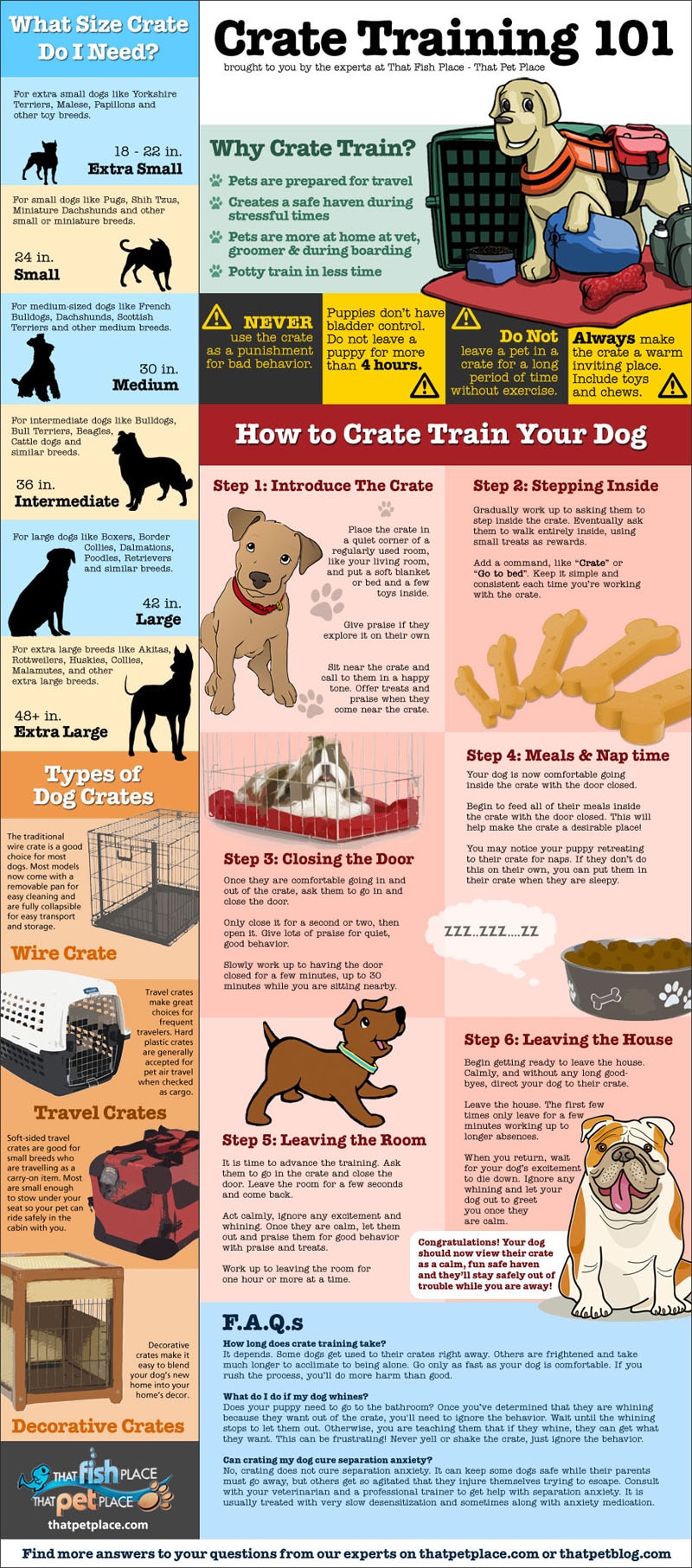 Crate training your dog may seem like a daunting task. In our last post of this series we discussed the benefits associated with crate training. This time we’ll focus on simplifying the crate training process into three easy steps that anyone can follow. You, too can have a successfully crate trained dog who is happy to sleep in their crate and retreat there when life becomes hectic!
Crate training your dog may seem like a daunting task. In our last post of this series we discussed the benefits associated with crate training. This time we’ll focus on simplifying the crate training process into three easy steps that anyone can follow. You, too can have a successfully crate trained dog who is happy to sleep in their crate and retreat there when life becomes hectic!
After you select your dog crate, the first step is to slowly introduce the new furniture to your dog.
Step 1: Introduce the crate
• Select your location and put a soft blanket or crate pad in the crate. Add a few favorite toys and chews. Please note: do not provide chews and toys if you dog is a heavy chewer or is not trusted with chews while unsupervised. Some dogs can destroy toys or chews and suffer from impactions or choke on the pieces.
• If your dog begins investigating the crate on his own, provide plenty of praise and treats for going near or in the crate on his own. You’ll want to stock up on training treats for this process!
• If he does not come to investigate on his own, sit by the crate and talk to him in soft, soothing tones. Call him over to you. Remember to give treats and praise each time he comes near the crate.
• Once he is comfortable being around the crate, begin to toss small treats just inside the door. Praise him each time he goes in to retrieve the treat.
• Eventually toss the treats farther back until he goes the whole way inside the crate. Lots of praise and love during this step. This is the part that may take the longest. Remember never to force him into the crate. You want him to choose to enter the crate on his own.
The key that many people disregard is that crate training does not happen overnight. Depending on your individual dog, this process could take weeks. You want to take it slow and only proceed once your dog is 100% comfortable with the previous step. If they begin to show reluctance or are clearly uncomfortable, slow your pace down and return to the previous step.
Step 2: Close the door
• Now that he is comfortable going in and out of the crate, close the door while he is inside for just a few seconds. Open the door and praise him for good behavior. The first couple of times only shut it for a second or two. Gradually increase the amount of time the door is shut.
• At this stage you can begin feeding his meals inside the crate. Start by leaving the door open. As he is more comfortable with the door being closed, you can close it while he is eating and open it when he is finished.
• Gradually increase the amount of time that the door is closed until you reach about 10 minutes of the door being closed.
• Don’t reward your dog by opening the door if he whines. Calmly wait until he stops whining, and then let him out.
• At this stage you should add a command each time you ask him to enter the crate. Keep it simple and consistent, like “Crate” or “Go to bed”
Step 3: Leaving the Room
• Your dog has perfected Step 2. Now ask him to go to his crate, close the door and quietly and calmly walk out of the room. The first time you should only be out of sight for a few seconds.
• Return and open the crate door, and praise his good behavior, but don’t make a production of coming back. You want him to stay as calm as possible.
• Gradually over the next few days increase the amount of time you leave the room until you are up to 30 minutes at a time.
• Once you’ve reached 30 minutes, try leaving the house for short periods of time (10-15 minutes), gradually working up to extended period.
• Remember, a dog shouldn’t be crated for more than 5-6 hours at a time, especially without exercise. Puppies should be crated for no longer than 3-4 hours at a time.
That’s it, three easy steps to crate train your dog. The key ingredient is patience, and this process may require lots of it. Don’t get frustrated or give up. It will be with the effort once your dog sees the crate as their home and refuge. Good luck! Be sure to let us know in the comments if you have any other tips you’d like to share!
 That Pet Blog That Pet Place Pet Blog
That Pet Blog That Pet Place Pet Blog

I really like the infographic you have included in your post about crate training your dog. I always have trouble leaving my dog in the crate because he likes to bark constantly. He doesn’t seem to like his crate.